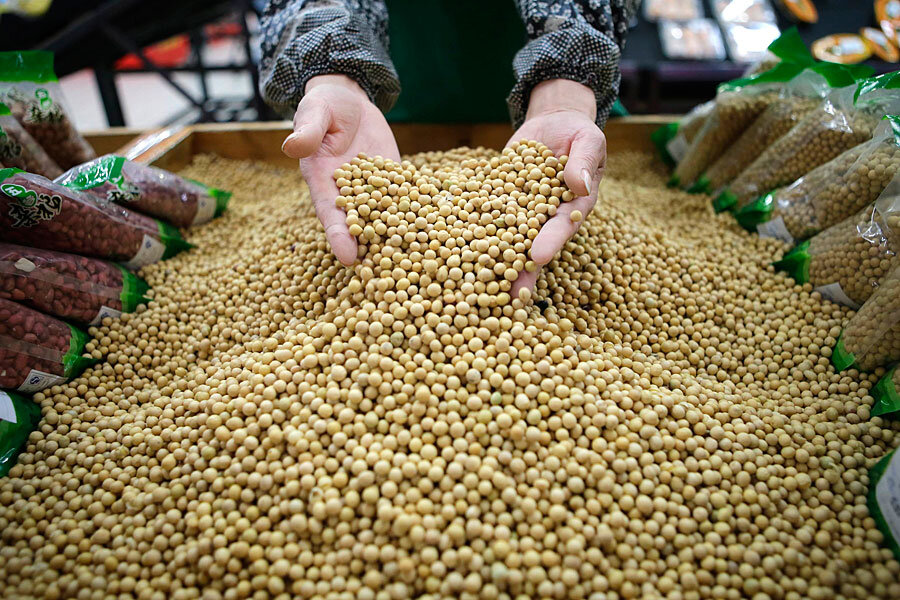Elevated CO2 robs crops of nutrients, say scientists
Loading...
Key crops eaten by a large portion of the world’s population have lower levels of zinc and iron when grown at the elevated carbon dioxide levels that scientists predict will occur by the middle of the century, according to a new study.
The research, detailed in this week’s issue of the journal Nature, found that wheat, rice and soybeans grown in high carbon dioxide conditions have lower levels of these important nutrients. The finding has major global health implications, as nearly 2 billion people around the world receive 70 percent or more of their dietary zinc and iron from these types of crops.
“Zinc deficiency can cause child mortality from infectious diseases because the immune system is not functioning properly, and iron deficiency can cause maternal mortality and reductions in IQ and work productivity, and increased mortality from infectious diseases,” said the study's first author Samuel Myers, a researcher at the Harvard School of Public Health in Boston.
Howard Frumkin, dean and professor of environmental and occupational health sciences at the University of Washington, in Seattle, said the new study provides the strongest evidence to date that climate change could threaten the nutritional value of foods with respect to zinc and iron.
“One of the cardinal features of climate change is higher carbon dioxide levels,” said Frumkin, who was not involved in the study. “This is exactly the kind of science we need to do to understand how to anticipate impacts of climate change on nutrition and how to protect people.”
Previous research has found evidence that elevated carbon dioxide levels can lead to lower agricultural yields and reduce the protein content of food crops, Frumkin added, and the finding now that zinc and iron are also affected raises the possibility that a host of other “micronutrients” such as iodine, selenium, and individual amino acids could also be impacted. “It’s a new area of research opening up now,” he said.
FACE experiments
Prior studies of crops grown in greenhouses and chambers with elevated carbon dioxide found nutrient reductions, but those studies drew criticisms for using artificial growing conditions.
In contrast, Myers and his team compiled results from experiments that used a free-air carbon dioxide enrichment – FACE – technology, which allows plants to be grown in open fields at elevated carbon dioxide levels. The technology consists of a ring of jets surrounding the crops, which maintains a certain level of carbon dioxide by tracking wind-direction and carbon dioxide concentration.
Myers’ group included crop scientists around the world who were conducting FACE experiments on 41 different genetic strains, or “cultivars,” of grains and legumes over three continents. “Our database was more than 10 times larger than all the previously published FACE data on nutrients in food crops combined,” Myers said.
The carbon dioxide levels in all of the included FACE experiments were around 550 parts per million, which is the projected atmospheric carbon dioxide level around the year 2050. For comparison, the carbon dioxide concentration at the start of the Industrial Revolution in the 18th century was 280 ppm, and April 2014 was the first time that global carbon dioxide levels climbed above 400 ppm for an entire month.
When the team analyzed their data, the results showed a significant decrease in the concentrations of zinc and iron as well as protein in wheat and rice cultivars. For example, zinc, iron, and protein concentrations in wheat grains grown at the FACE sites were reduced by about 9 percent, 5 percent, and 6 percent respectively, compared with wheat grown at ambient carbon dioxide. If people consumed more food to make up for the drop in nutrients there could be other health consequences, including increased obesity, Myers posited. “The ratio of nutrients to calories in the food is really important.”
Zinc and iron were also significantly reduced in legumes such as soybeans and field peas in the study, although protein was not.
Countermeasures
The authors suggest that some of the nutritional deficits they observed could be counteracted through breeding programs that select for decreased sensitivity to carbon dioxide. For example, their results showed that zinc and iron varied substantially across different rice strains.
David Wolfe, a plant and soil ecologist at Cornell University in Ithaca, New York, said that in addition to reducing carbon dioxide admissions, other strategies include breeding for crops that take up more iron and zinc from the soil in elevated carbon dioxide conditions, or to diversify crops to include protein-rich legumes such as beans and peas or iron-rich spinach. The food industry could also fortify salts or other foods with iron and zinc, Myers added.
Myers thinks a combination of approaches will be necessary to address this issue. “All of these countermeasures have their own set of problems,” he said. “I don’t think there’s going to be a single easy fix.”
Ker Than is a freelance writer living in the Bay Area. He tweets at @kerthan.
Originally posted on Inside Science News Service.





